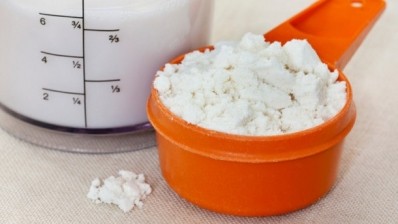2014 SPECIAL EDITION: DAIRY PRODUCT QUALITY TESTING
Five years 'reasonable time frame' for FAO DIAAS protein measurement adoption: Volac

Speaking with DairyReporter.com, Suzane Leser, head of nutrition at Volac said that five years was “a reasonable time frame” for the replacement of the current Protein Digestibility Correct Amino Acid Score (PDCAAS) protein measurement method with DIAAS.
In a 2013 report, FAO recommended replacing the current PDCAAS with DIAAS. Using this alternative method, researchers discovered that dairy proteins can deliver up to 30% more amino acid than plant sources such as soy isolates.
DairyReporter.com approached FAO for an update on DIAAS, but received no response prior to publication.
But "as with any new methodology" work first needs to be done to validate the method, said Leser.
“There is follow-up work to do before FAO can adopt the new method, and this work is on-going,” she said.
"We also need to develop a robust DIAAS dataset, particularly for the lower protein quality sources and for a wide range of foods. It was only in January this year that the FAO launched a public call for experts to consider these critical issues.”
“Should all go well, adoption within five years is a reasonable time frame," said Leser.
"Urgent need for DIAAS"
Meanwhile, on the other side of the Atlantic, Minnesota-based Davisco Foods International has urged the FAO to speed up its adoption of the DIAAS method. Until then, animal proteins will continue to be "penalized with PDCAAS," she said.
“Adoption of DIAAS is moving forward but slowed by limitation in measurement of ileal digestion," Phanin Leksrisompong, director of business development, Davisco Foods, told DairyReporter.com.
Leksrisompong understands that the FAO has adopted the pig as an official model for measurement, which she said "should allow DIAAS to move forward."
“We need to provide consumers with accurate information so they know now to look for high quality and complete proteins."
Mirroring Leksrisompong, Leser added: “High quality proteins are widely acknowledged in EFSA opinions, but although numerous methods exist to evaluate protein quality, such as PDCAAS, they do not come without limitations. Therefore, there is an urgent need for DIAAS, as the accurate method, to be adopted.”
"Limitations of PDCAAS"
The FAO report, published in March 2013, said that “limitations of PDCAAS have been recognised.”
When using the DIAAS method, however, it said researchers were able to differentiate protein sources by their ability to supply amino acids for use by the body and demonstrated the higher bio-availability of dairy proteins when compared to plant-based protein sources.
Unsurprisingly, the dairy sector welcomed this finding. The European Natural Soyfoods Association (ENSA) soy sector claimed meanwhile that the finding was only meaningful for the malnourished.
Approaching this divide, Leser urged the "wider protein industry to support the FAO report recommendations."
“A better understanding of quality scores will allow those developing new and more effective protein blends to ensure they are delivering a product of high quality and, very importantly, it will enable us to talk about the quality of our protein and blends to consumers within a safe regulatory environment in the future," she said.
“DIAAS is important because it might finally allow for a definition of ‘high quality protein’ in legislation."
"As fast moving science takes the benefits of protein mainstream and uncover new benefits that widen its application to a range of health foods, a definition for high quality will enable us to differentiate proteins in specific health claim submissions in the future," she added.








